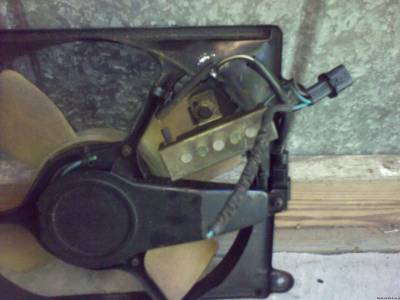So I am working this issue to come up with a definitive answer to this question. There are 2 dozen threads about this one single fan, so my goal is to put it to rest. By my best analysis of the schematic, and some help from another member who sent me the schematic, the only difference between the low speed and high speed fan relay, is the resistor in line with the low speed positive output of the low speed trigger wire to the fan. If you remove the resistor, and left everything else the same, the fan would run high speed regardless of which relay triggered it. The relays run in parallel so what appears to happen is with the low speed relay triggered, it gets a resisted voltage through the fan. When the high speed relay triggers, since the low speed has the resistor, the full voltage goes through the non-resisted wire. At most it appears three wires would run to the fan but I am yet to determine if the hot side wires for the fan join before they hit the fan or if the fan has three wires at all. I don't have the stock fan, one of you can chime in here but the point may be mute anyway. It may even have 2 grounds bringing the number up to 4, but the grounds are shared regardless so even if one was missing, it would still work. The only reason to have two grounds would be increased voltage requiring a larger wire.
Steve, looking at the schematic, there is no path from hot to ground through the fan without triggering one of the relays. Even removing the resistor should not spontaneously trigger the fan. Either one of the relays is bad or one of the sensors is bad.
/brox












